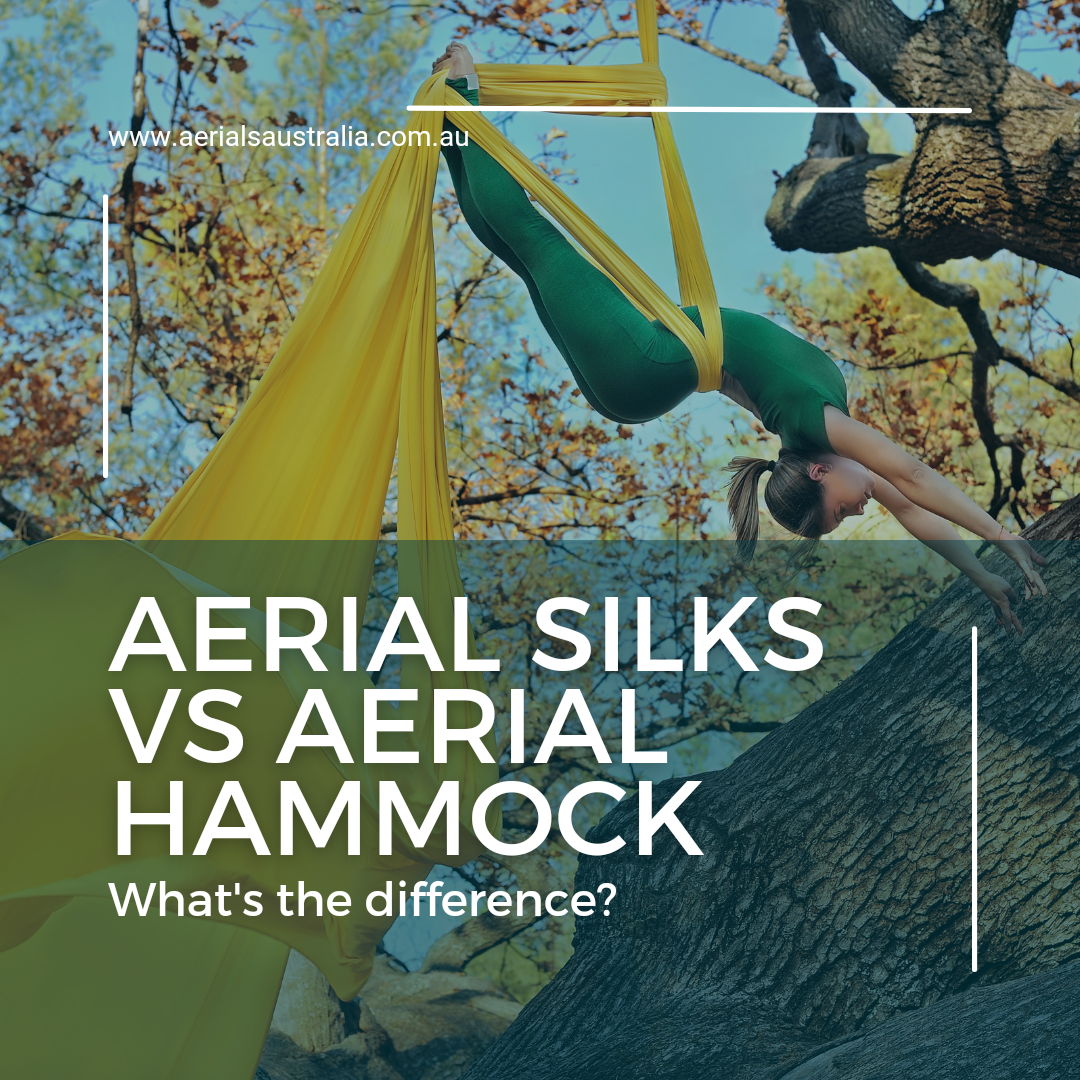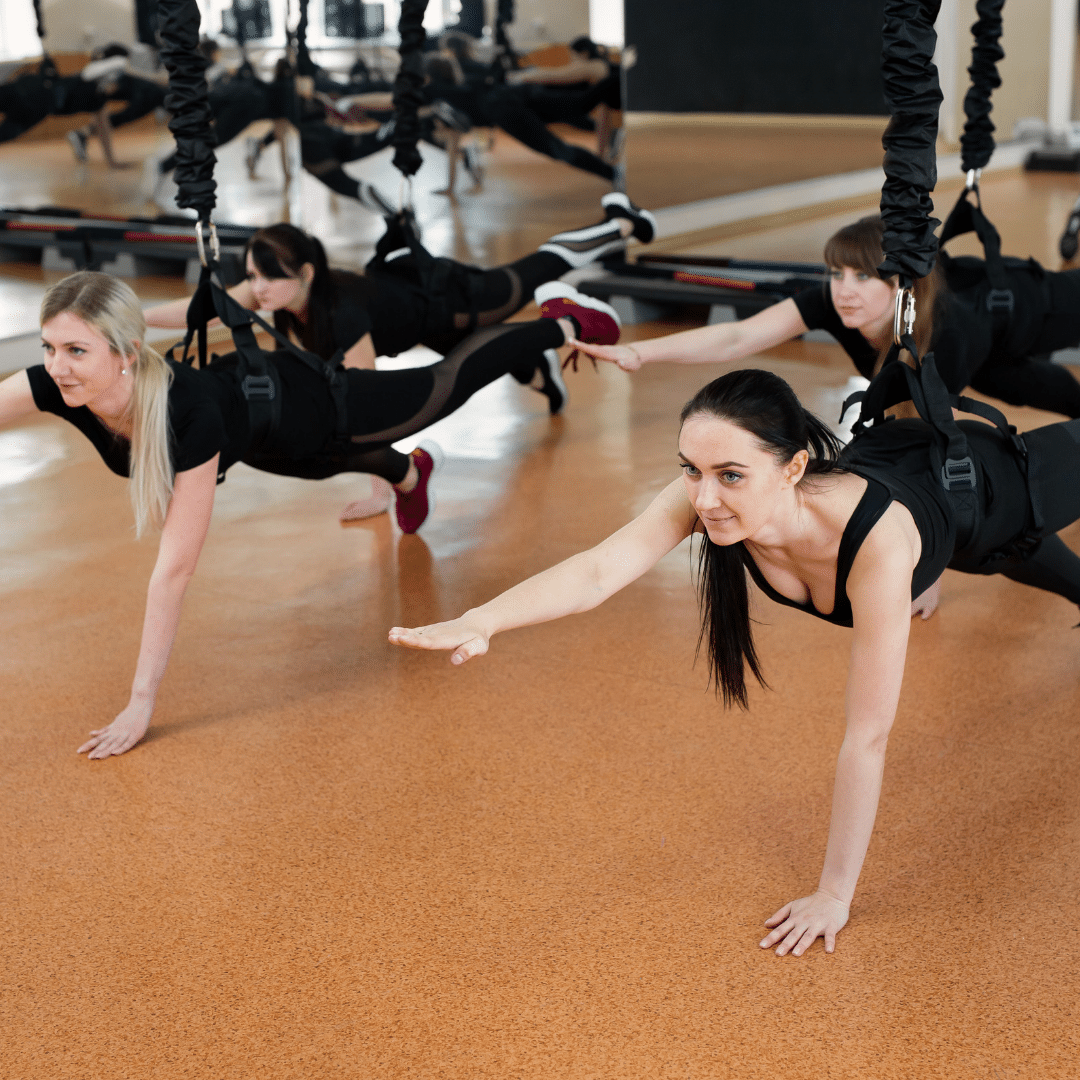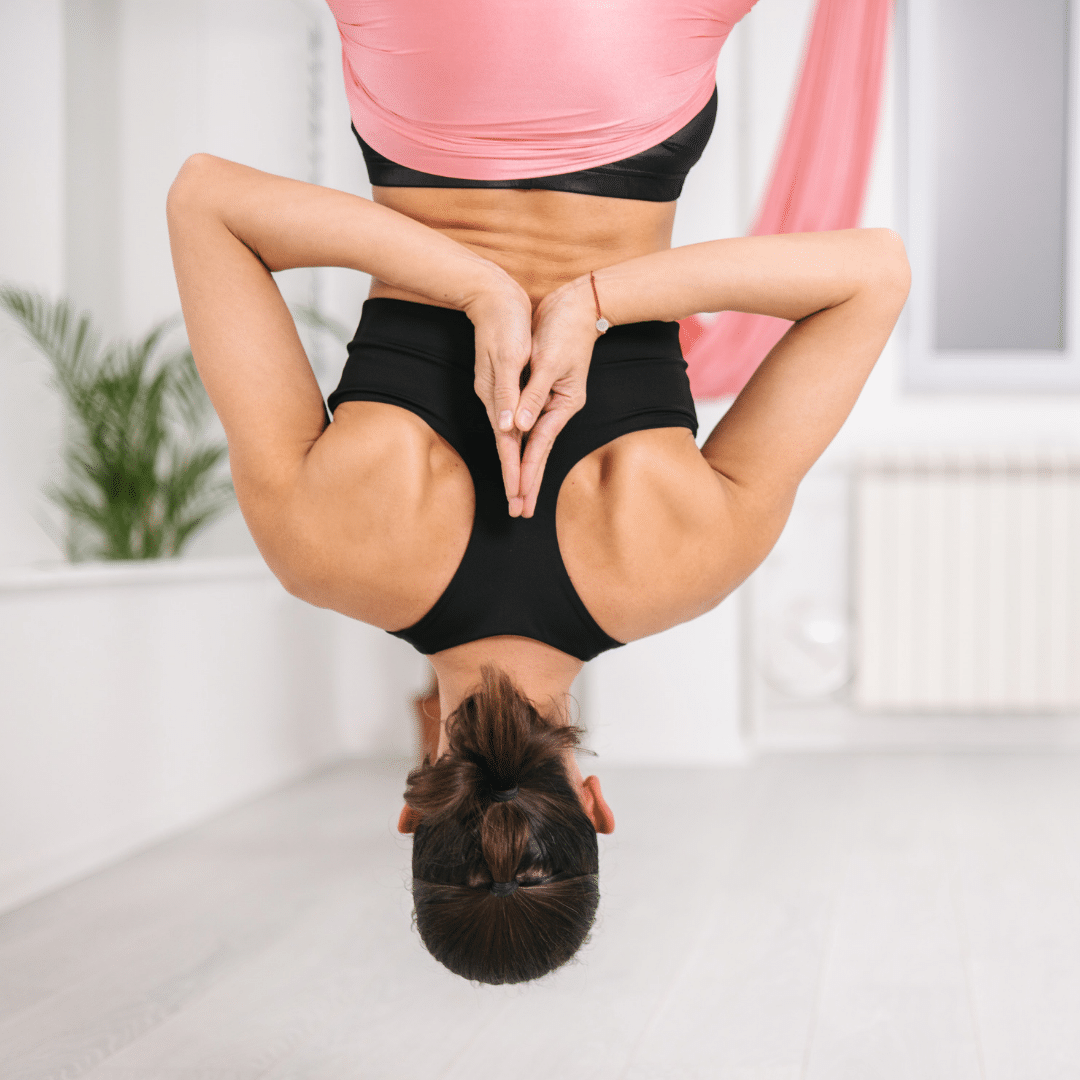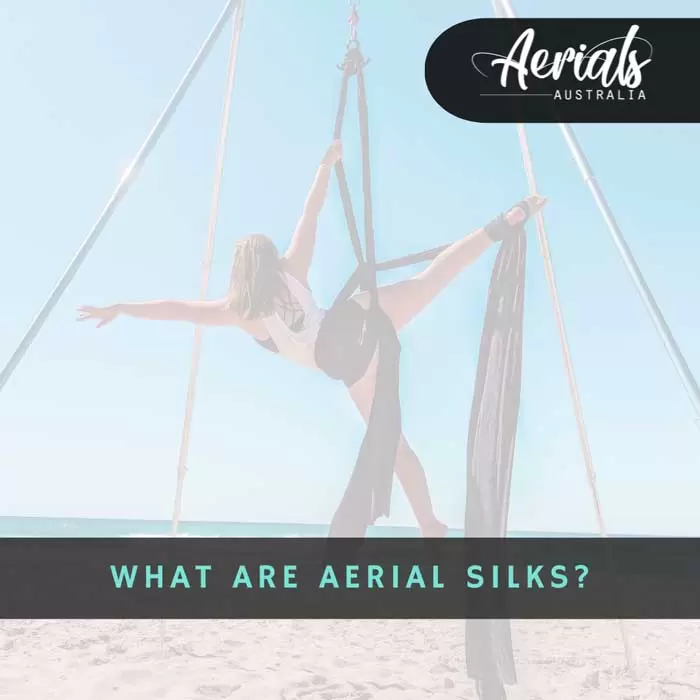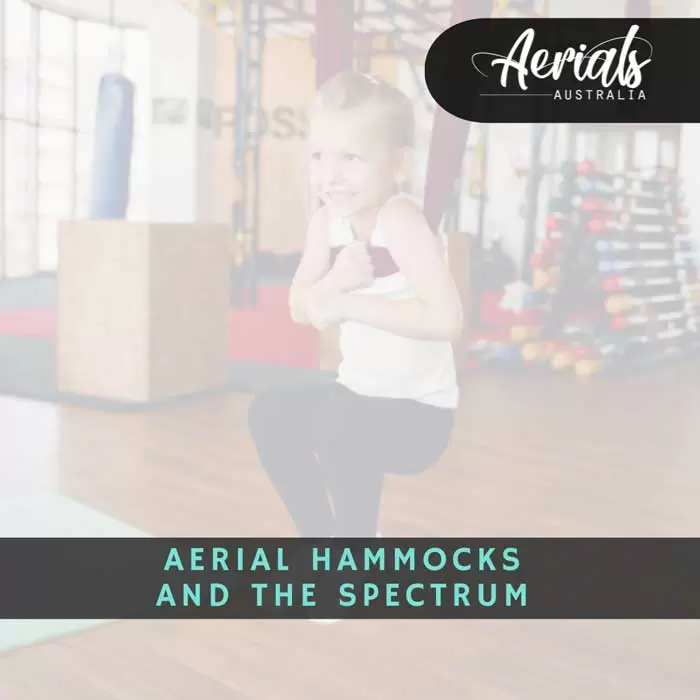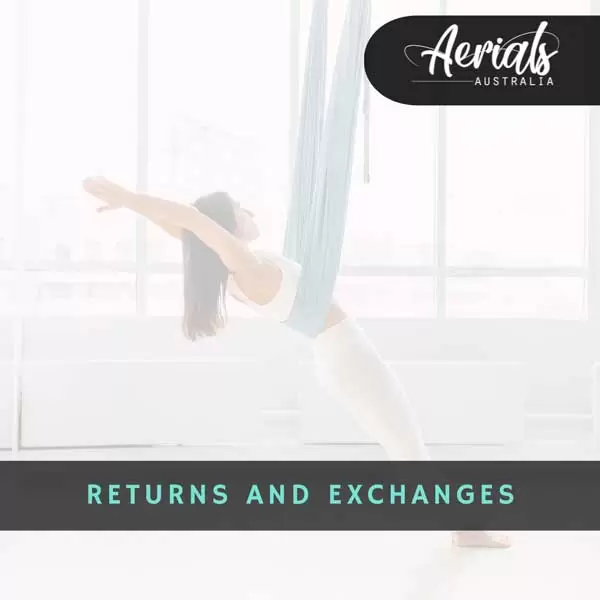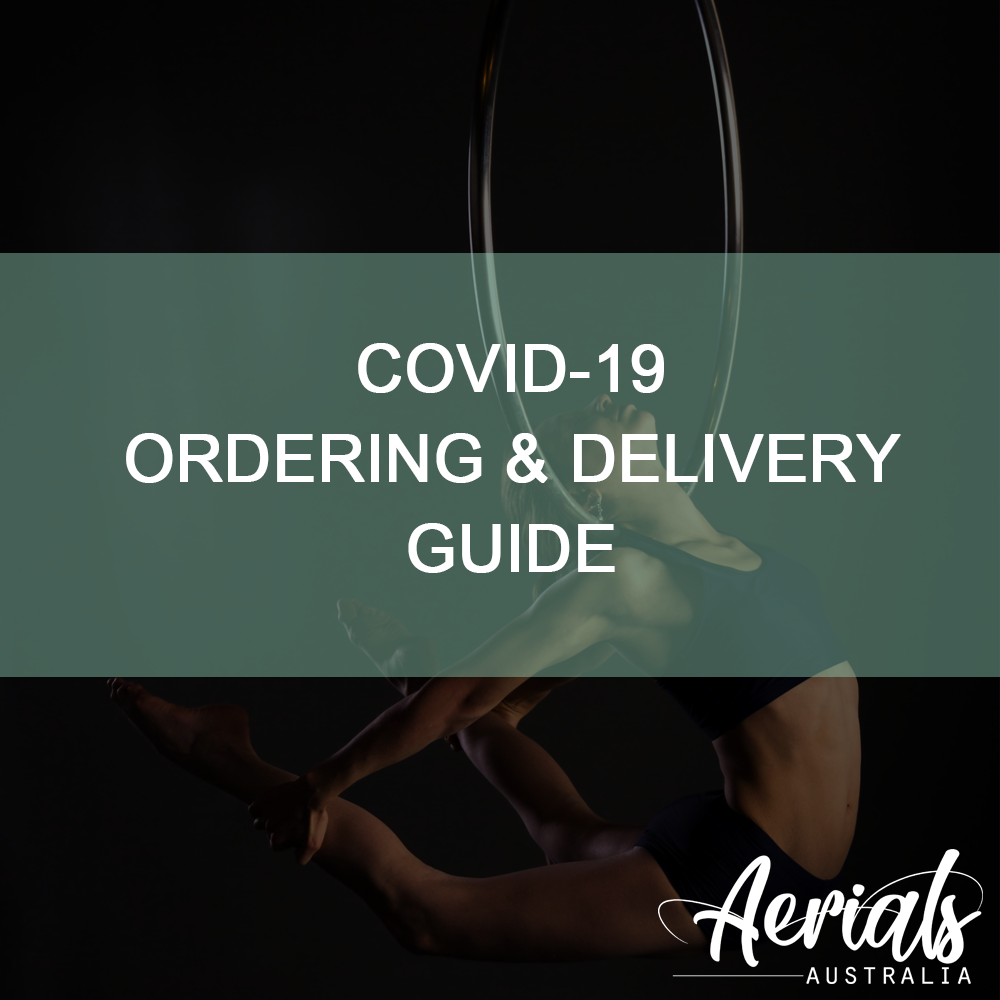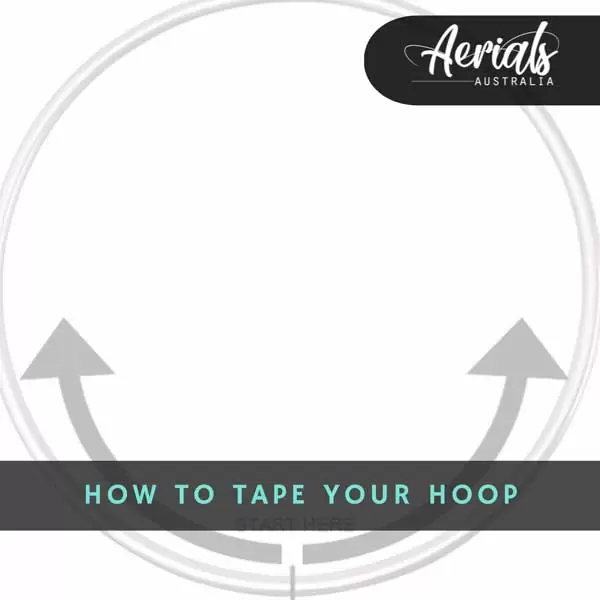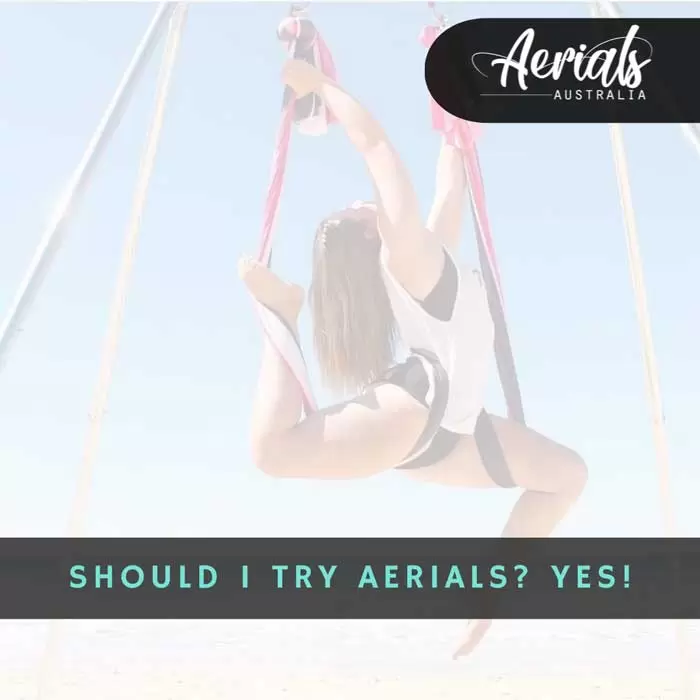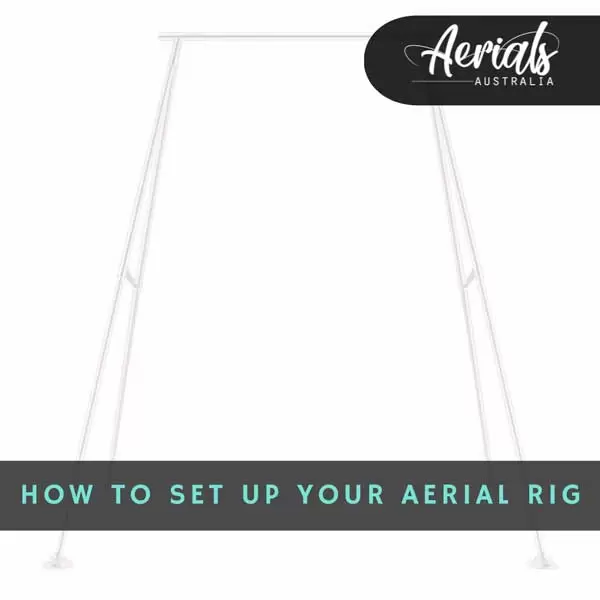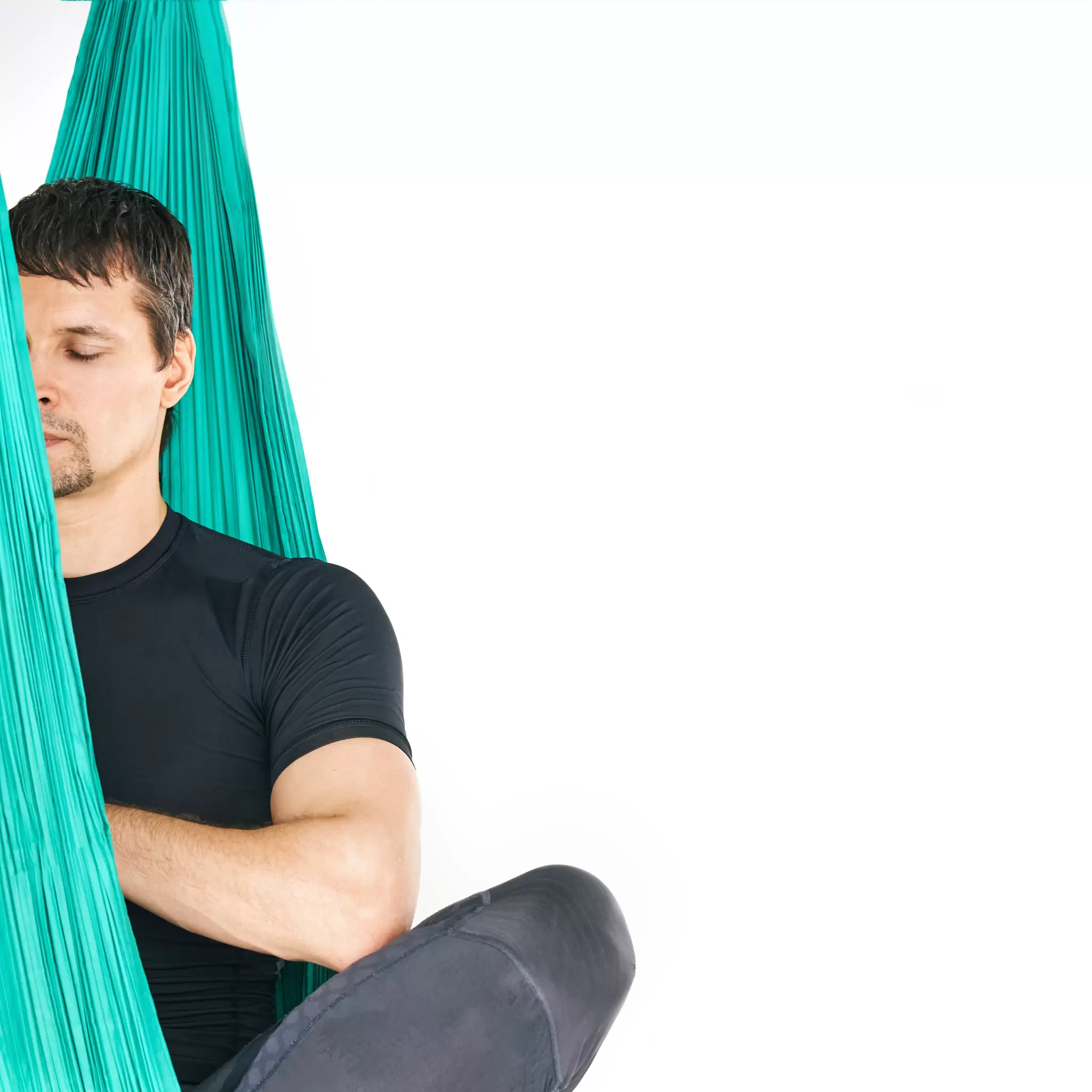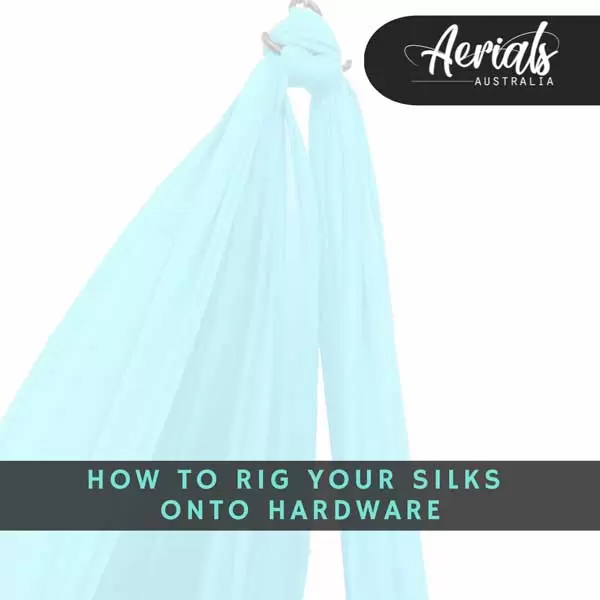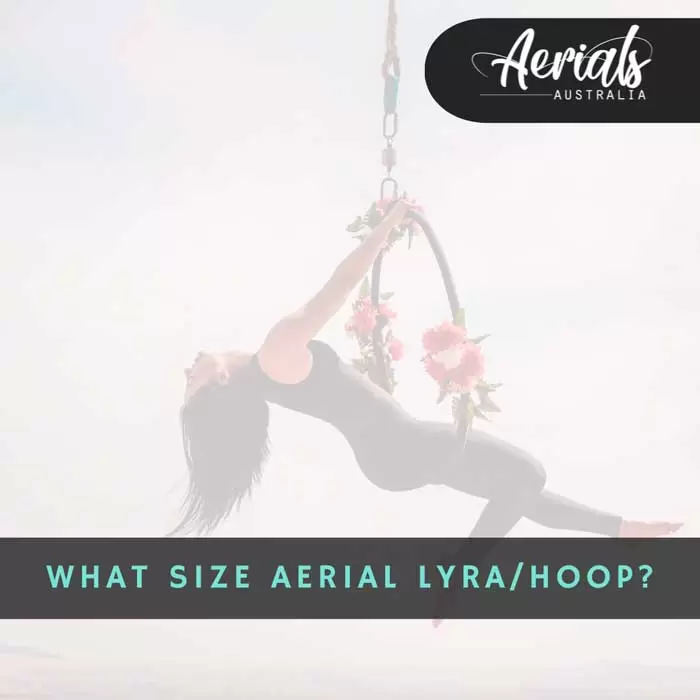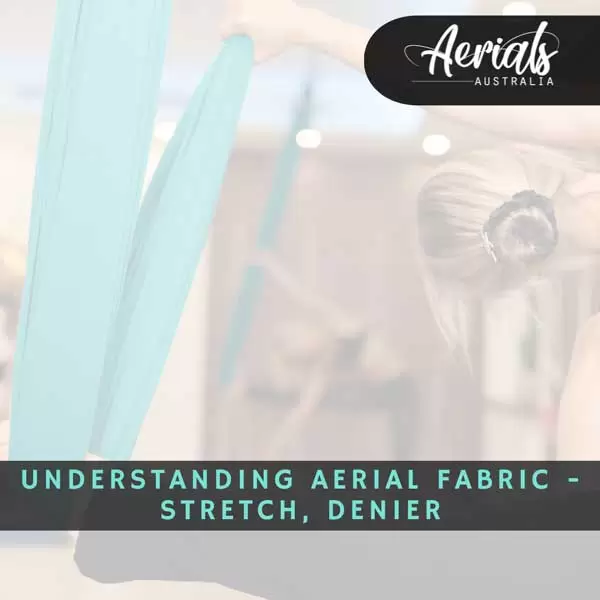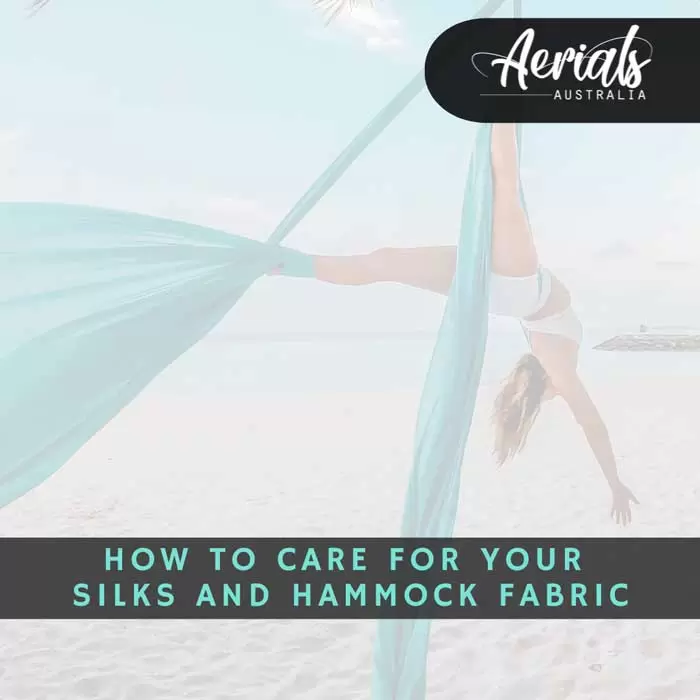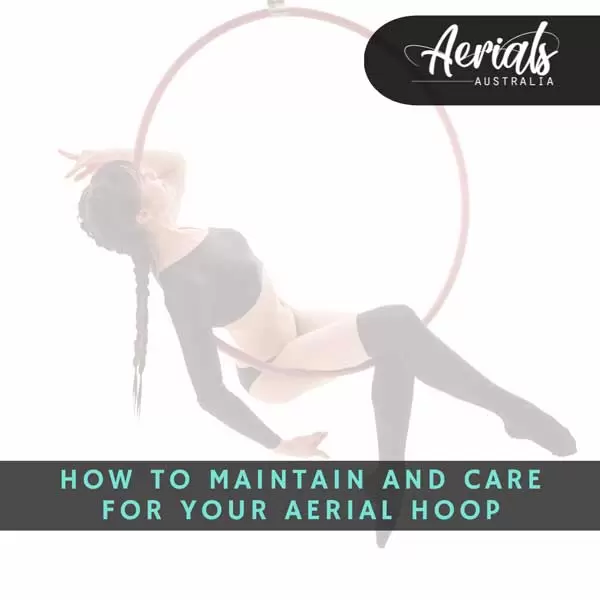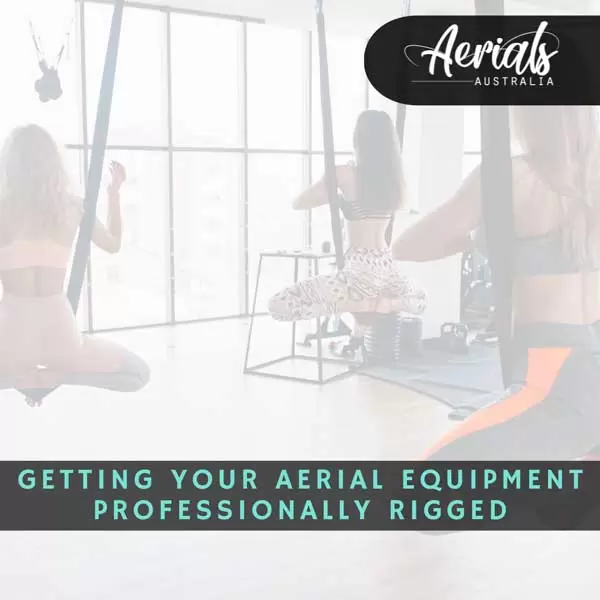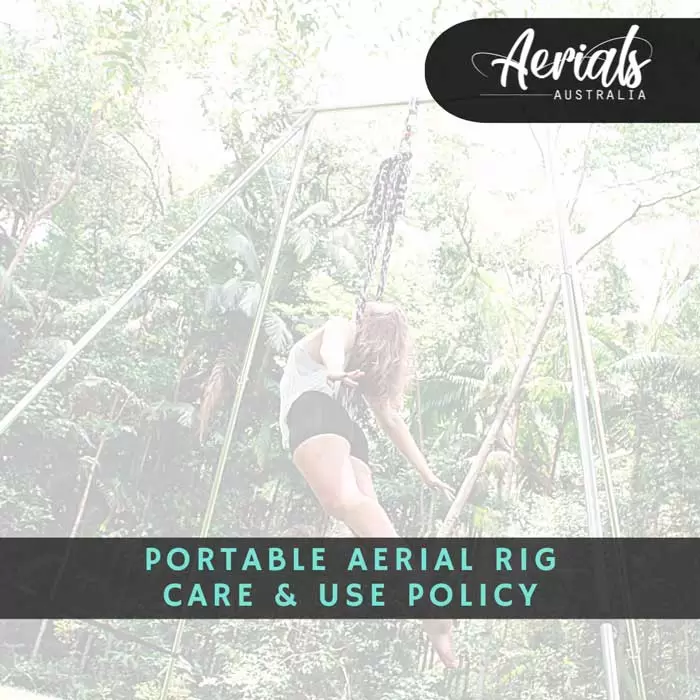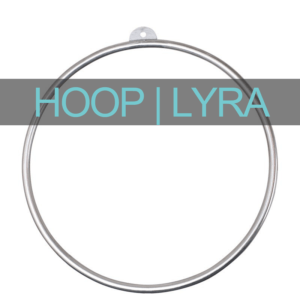Where Can I Buy Aerial Silks?, Discover the Grace of Flight: Aerial Silks from Aerials Australia
Discover the Grace of Flight: Aerial Silks from Aerials Australia Aerial Silks have emerged as a mesmerizing discipline [...]
Aerial Silks Vs Aerial Hammock
Aerial Silks vs Aerial Hammock Aerial silks and aerial hammock are two captivating forms of aerial arts that [...]
What is Bungee Fitness | Benefits of Bungee Fitness
Bungee Fitness is a fun and engaging workout program that combines elements of dance, fitness, and aerial acrobatics [...]
Benefits of Aerial Yoga | What Are Aerial Yoga Hammocks?
Aerial Yoga - more than meets the eye! Did you know aerial yoga can: decompress your spine, stimulate [...]
What are Aerial Silks? | Aerials Australia
Aerial Silks include two strands of fabric hanging from a top centre point. This differs from aerial [...]
Aerial Hammocks + Autism NDIS Funding | Aerials Australia
Aerials Australia is proud to supply aerial hammocks to special needs children and adults around Australia, working in [...]
Bungee Fitness Install, Care & Maintenance Guide
Hi Aerialists! Congratulations on your new purchase of aerial bungee! Please thoroughly read the below information on how [...]
Returns & Exchanges
Please ensure you're up to date with the Aerials Australia Terms and Conditions before placing your order. Read [...]
COVID19 ORDERING & DELIVERY GUIDE
November 2020 UPDATE: We are running as normal, but please be advised of your town or state is [...]
AERIAL YOGA 101 – A beginners guide to Aerial Yoga Hammocks – FREE RESOURCE by Aerials Australia
Aerials Australia brings you a comprehensive beginners guide to Aerial Yoga with your New Aerial Yoga Hammock [...]
HOW TO TAPE YOUR AERIAL LYRA HOOP | AERIALS AUSTRALIA
A common question with many answers - The best way to wrap/tape your lyra hoop. Everyone does [...]
AM I STRONG ENOUGH TO TRY AERIALS? YES! | AERIALS AUSTRALIA
This question pops up every day. "Aerials look so fun - but I have no strength! Should I [...]
HOW TO SET UP YOUR PORTABLE AERIAL RIG
Here is a quick video to assist you in the easiest way to assemble your Aerial Supplies Australia [...]
HOW TO SET UP YOUR AERIAL YOGA HAMMOCK & TRAINING SPACE | AERIALS AUSTRALIA
A quick guide on how to set up your new Aerial Yoga Hammock from Aerials Australia. Please see [...]
HOW TO RIG YOUR AERIAL SILKS ONTO HARDWARE | AERIALS AUSTRALIA
A quick video to help you understand the simple and safest process to tie your Aerial Silks from [...]
WHAT SIZE AERIAL LYRA / AERIAL HOOP DO I NEED? | AERIALS AUSTRALIA
If you're in the market for a lyra, you've probably already seen that they come in different sizes. [...]
UNDERSTANDING AERIAL FABRIC – STRETCH, DENIER | Aerials Australia
With so many options of fabric out there (no stretch, low stretch, medium, high, super high! Nylon, Tricot, [...]
HOW TO MAINTAIN AND CARE FOR YOUR AERIAL SILKS & YOGA HAMMOCKS | AERIALS AUSTRALIA
Hi Aerialists! Congratulations on your new purchase of aerial silks/hammock. Please thoroughly read the below information on how [...]
HOW TO MAINTAIN AND CARE FOR YOUR AERIAL LYRA HOOPS | AERIALS AUSTRALIA
Hi Aerialists, So! You’ve taken the leap and purchased your own Aerial Lyra. Yay! But first, let’s have [...]
GETTING YOUR AERIAL EQUIPMENT PROFESSIONALLY RIGGED – A GUIDE | AERIALS AUSTRALIA
As we all know - rigging your equipment is of the utmost importance. We always, always recommend you [...]
Portable Aerial Rig Care & Use Policy
Upon purchasing a portable aerial rigs, you are agreeing to the following care & use instructions. Rigs are [...]

FREQUENTLY ASKED QUESTIONS
Aerial Silks
- Grip Strength
-
- How to: Use grip strengtheners or hang from a pull-up bar to improve your grip strength.
- Core Engagement
-
- How to: Practice planks and other core exercises to engage your core muscles effectively.
- Foot Locks
-
- How to: Learn the basic foot lock techniques from a certified instructor and practice them regularly.
- Shoulder Mobility
-
- How to: Incorporate shoulder stretches and rotations into your warm-up and cool-down routines.
- Sequencing
-
- How to: Plan your routine in advance and practice it in segments before putting it all together.
- Spotting
-
- How to: Always practice new or complex moves with a certified instructor or experienced spotter for safety.
Aerial Yoga Hammocks
- Alignment
-
- How to: Use mirrors or video feedback to check your alignment and make necessary adjustments.
- Breathing
-
- How to: Practice deep breathing techniques like diaphragmatic breathing to enhance your poses.
- Progressive Loading
-
- How to: Start with basic poses and gradually incorporate more complex ones as you become more comfortable.
- Balance
-
- How to: Use props or a spotter to help maintain balance when you’re learning new poses.
- Fabric Care
-
- How to: Wash and inspect your hammock regularly according to Aerials Australia guidelines.
- Hydration
-
- How to: Drink water before and after your session to stay hydrated.
Aerial Nets
- Safety First
-
- How to: Always inspect the net for any signs of wear or tear before each use.
- Spatial Awareness
-
- How to: Practice basic moves to understand how much space you need for each maneuver.
- Smooth Transitions
-
- How to: Work on transitioning smoothly from one move to another to maintain flow.
- Hand Placement
-
- How to: Be mindful of where you place your hands to avoid tangling or losing grip.
- Dynamic Moves
-
- How to: Start practicing dynamic moves closer to the net before taking them higher.
- Communication
-
- How to: Use verbal cues and signals to communicate with your spotter or instructor.
Bungee Fitness
- Harness Fit
-
- How to: Adjust the harness so that it’s snug but not too tight to allow for a range of motion.
- Jump Technique
-
- How to: Learn the proper form for jumps from a certified instructor.
- Rest Periods
-
- How to: Take short breaks between sets to avoid overexertion.
- Footwear
-
- How to: Choose footwear that provides good grip and ankle support.
- Posture
-
- How to: Keep your back straight and engage your core to maintain good posture.
- Resistance Levels
-
- How to: Adjust the bungee resistance according to your fitness level for a more effective workout.
Trapeze Bars
- Chalk Up
-
- How to: Use gymnastic chalk or Grip Aid on your hands for a better grip.
- Leg Strength
-
- How to: Incorporate leg strengthening exercises like squats and lunges into your routine.
- Safety Lines
-
- How to: Always use safety lines and mats, especially when trying new moves.
- Wrist Conditioning
-
- How to: Use wrist curls and other exercises to strengthen your wrists.
- Bar Care
-
- How to: Regularly inspect the bar and ropes for any signs of wear or damage.
- Momentum Control
-
- How to: Practice controlling your momentum through core engagement and precise movements.
Aerial Pole
- Warm-Up
-
- How to: Use dynamic stretches and light cardio to warm up before starting your routine.
- Skin Contact
-
- How to: Wear shorts and sleeveless tops to maximize skin-to-pole contact for a better grip.
- Pole Care
-
- How to: Clean your pole with a specialized cleaner before and after each session.
- Clothing
-
- How to: Choose clothing that allows for maximum skin exposure without compromising safety.
- Cool Down
-
- How to: Incorporate static stretches and deep breathing in your cool-down routine.
- Nutrition
-
- How to: Eat a balanced meal rich in protein and carbs about 2 hours before your session for sustained energy.
Aerial Lyra Hoop
- Grip Training
-
- How to: Use grip strengtheners or practice hanging exercises to improve your grip. This will help you hold onto the hoop more securely during routines.
- Core Stability
-
- How to: Incorporate core exercises like planks and leg raises into your training. A strong core will help you maintain balance and execute moves more efficiently.
- Flexibility
-
- How to: Work on your flexibility by doing regular stretching exercises. Flexibility is essential for executing complex poses and transitions.
- Safety Measures
-
- How to: Always check the rigging and hardware before each session. Use mats and have a spotter present, especially when trying new or complex moves.
- Spinning Control
-
- How to: Practice controlling your spin by engaging your core and using your arms and legs. Spinning is a common element in Lyra, and being able to control it is crucial.
- Routine Planning
-
- How to: Plan your routine in advance, including the sequence of moves and transitions. This will help you maintain a smooth flow during your performance.
We hope you find these tips & tricks helpful for your aerial and bungee fitness journey!
Definitely. If you’re making an order of 3+ silks, hammocks, lyra or rig equipment, just send us an email and we’ll be happy to put together a package for you.
We operate primarily online and have warehouses throughout Australia. Our warehouses are not open to the public, however feel free to let us know if you require samples.
You can contact us by phone on 0483 323 786, or email us at info@aerialsaustralia.com.au
We are proud to have studios, circuses, children’s events and performances using Aerials Australia equipment around Australia, New Zealand, Indonesia, Phillipines. We are Australia’s highest company for aerial equipment and will always continue to grow and expand with the market.
Absolutely. Send us through an email with your ABN/ACN and we will write up a custom invoice for your order with wholesale rates. Email: info@aerialsaustralia.com.au
We currently offer PayPal, AfterPay, Debit & Credit, American Express, Amex, Matercard (through paypal checkout) or bank transfer. Please contact us if you choose to transfer by bank.
While plain stainless steel is often preferred by some, other options including using the product Dry Hands, or alternatively, taping your lyra for more grip.
Caring for your lyra is important to ensure a long lasting product. Ensure you take it down after every use and never leave out in the weather. Always check your lyra for cracks and hardware for seizing, rusting, or any damages before every use and disuse if any of your equipment peaks concerns. We recommend getting your lyra checked by a fabrication engineer every 6 months to ensure your product remains safe to use.
Our lyras are made of stainless steel in the tubing to ensure a long lasting product. The tabs are made of steel.
We always recommend to train only with a professional trainer as aerial sports can be dangerous! You’ll need to ensure you have at least 2m on all sides of you for clearance (more if possible)and always, always practice with a crash mat. We recommend Hart crash mats.
We always recommend discussing your options with a rigger, builder or engineer. It’s important you install your lyra in a suitable position capable of bearing weight, but we cannot give one general answer as each customer is different.
Delivery is by Australia Post and will take anywhere from 3-7 business days (after processing) to arrive, depending on your location.
Lyras are usually in stock and we will send out within 24 hours. During busy times (Christmas, school holidays, public holidays, Easter) some stock may sell out – during these times please allow 3-7 business days to process your order.
If you choose basic or pro rigging with your lyra, that is all you’ll need for the lyra itself. Depending on where you are rigging from, you may also need a sling, rope, or wire to lower the lyra and appropriate rigging from your rigging point. It’s best to talk to a qualified rigger and builder to ensure you are rigging correctly and your space is correct.
Purchasing a lyra with no rigging is best if you already have your carabiners and swivel.
Basic rigging includes 2x steel carabiners and a swivel – this is enough for most setups.
Pro rigging includes two autolock carabiners, a maillon and a swivel. This is best used for those who need to put their lyra up and down often and easily and is a little quicker to assemble.
This is quite simple, The best way to choose your size is to sit on the ground up straight with shoulders back, measure from floor to your head and add 5cm. This gives you an approximate height if you were sitting in the lyra with some space above for clearance.
Our lyras come in sizes 85, 90, and 95cm with a standard 2.5 tube. We can also custom order 3.2 tube lyras in the above sizes if you prefer a thicker lyra.
We will always firstly recommend training your grip – this can take a long time to avoid feeling ‘slippery’ and something many people don’t prioritize. However, occasionally aerialists will use rosin to rub onto their hands to aid grip. Try to avoid using too often as to not become reliant.
Our Aerial fabric is a 40 denier nylon tricot with low-medium stretch, which we believe is a superior fabric with the best of all worlds. 40 denier tricot is a lightweight, yet super strong and secure fabric. Low-medium stretch refers to the overall stretch in the silks, which is around 8-10cm per metre.
The best way to understand stretch is that if you are using silks 1m high, you will stretch around 10cm bearing all your weight. If you rig a 6m high silk, you will stretch around 60cm bearing all your weight at the base of the fabric. The longer the silks, the more calculated overall stretch at the base, lessening with height. Here is a fabulous video from Aerial Dancing explaining the differences, if you are not familiar:
If you are not a professional, we always recommend to train only with a professional trainer as aerial sports can be dangerous! Always practice with another person present to ensure you have a second pair of eyes if any isses were to arise with your training. You’ll need to ensure you have at least 2m on all sides of you for clearance (more if possible)and always, always practice with a crash mat. We recommend Hart crash mats.
After processing, delivery will usually be via australia post (or a change of service depending on location and availability) to best suit your needs. Please allow around 3-7 business days for your order to arrive.
As each order is for different lengths and sizes, we need to cut each length of fabric and package from there. Please allow approximately 3-5 business days to cut and pack – or 3-7 business days in busy times as orders increase and may be slightly delayed. We do our absolute best to ensure you’ll recieve your silks ASAP.
Your silks should always be away from direct sunlight and never left outdoors. We recommend taking them down when not in use – firstly, so others don’t use them if they are not familiar with the sport, and secondly so you can ensure the fabric and hardware are checked before each use to ensure safety.
You should check your fabric in entirety before every use. If you see any nicks, holes, runs, or burns, discontinue use immediately, it’s not safe to use damaged silks and this needs to be replaced.
You should check your hardware before each use and ensure each piece works securely and there are no damages.
When using your silks, ensure jewellery is taken off and you arent wearing any items that could snag the fabric (think zips, hair accessories, or anything with sharp edges)
We always recommend discussing your options with a rigger, builder or engineer. It’s important you install your silks in a suitable position capable of bearing weight, but we cannot give one general answer as each customer is different.
You’ll need a figure/aerial 8, swivel, and 2x carabiners. All our silks kits come with this hardware.
Our silks come with everything you need to set them specifically up. Keep in mind, depending on your rigging point, you may need slings, eyebolts, or other various hardware – it’s best to chat to a rigger, builder and engineer to discuss your rigging options.
Yes, absolutely! Just send an email to info@aerialsaustralia.com.au and we’ll write up a custom invoice for you.
Measure from the floor to your rigging point. Multiply this x2 and add 1-2 metres to allow excess tail and excess to rig your silks.
For example, if my rigging point is 4 metres high, I will need approximately 10 metres of fabric.
PLEASE NOTE our listings are for the total length of fabric – not the drop.
We will always firstly recommend training your grip – this can take a long time to avoid feeling ‘slippery’ and something many people don’t prioritise. However, occasionally aerialists will use rosin to rub onto their hands to aid grip. Try to avoid using too often as to not become reliant.
Our fabric is a 40 denier nylon tricot. It has low stretch in the length (so you don’t end up with your head on the floor when practising!) but has stretch in the width for comfort. It is a very strong and secure fabric, yet looks beautiful and delicate
Your hammock should always be away from direct sunlight and never left outdoors. We recommend taking it down when not in use – firstly, so others don’t use it if they are not familiar with the sport, and secondly so you can ensure the fabric and hardware are checked before each use to ensure safety.
You should check your fabric in entirety before every use. If you see any nicks, holes, runs, or burns, discontinue use immediately, it’s not safe to use a damaged hammock and this needs to be replaced.
You should check your hardware before each use and ensure each piece works securely and there are no damages.
When using your hammock, ensure jewellery is taken off and you arent wearing any items that could snag the fabric (think zips, hair accessories, or anything with sharp edges)
We always recommend discussing your options with a rigger, builder or engineer. It’s important you install your hammock in a suitable position capable of bearing weight, but we cannot give one general answer as each customer is different.
We send all our hammocks via Australia Post Express, and your hammock should be in your hands within 1-3 business days after recieving your tracking number.
Our hammocks are most likely always pre-cut and in stock, and we strive to send out via express post within 24 hours. However, during busy seasons some colours can sell out fast in which case we re-stock asap, within 3-5 business days. Please allow this timeframe into consideration when ordering.
Our hammocks come with everything you need to set the hammock itself up. Keep in mind, depending on your rigging point, you may need slings, eyebolts, or other various hardware – it’s best to chat to a rigger, builder and engineer to discuss your rigging options.
A double point is a stationary hammock and rigged via two points. It does not spin, and is perfect for yoga or conditioning.
A swivel point comes with extra hardware and is rigged via a single point. However, it can also be used as a double point. A swivel hammock is most commonly used for aerial dance, allowing the aerialist to spin.
Our hammocks come in a standard 5m length – however we are more than happy to customise the length of fabric for you if you prefer. Just send us an email at info@aerialsaustralia.com.au
40 denier tricot is the fabric type our silks are made of. 40 denier refers to the thickness of fibers in the fabric. Overall, 40 denier tricot is a lightweight yet super strong fabric with low-medium stretch.

